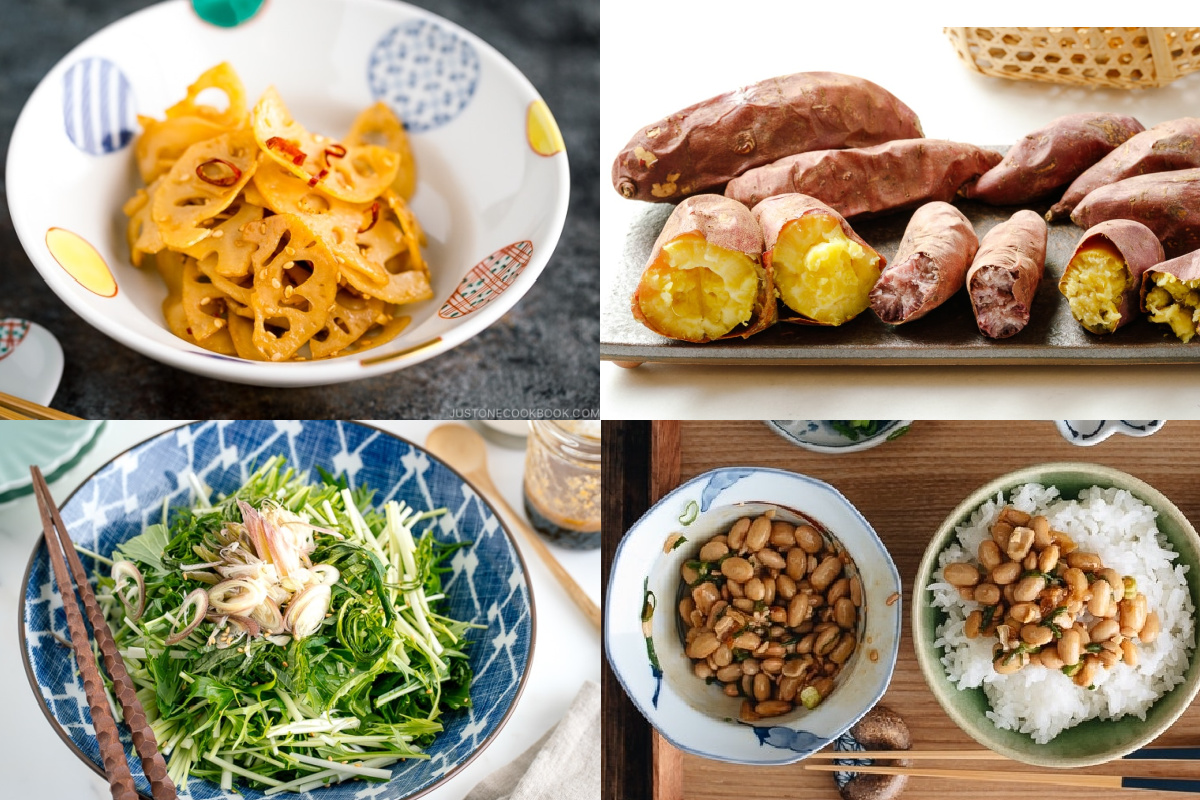
Traditional Japanese food has been known to be one of the critical factors in the longevity of the Japanese people. What exactly do the Japanese eat? From miso to umeboshi to shio koji, let us guide you through the healthiest Japanese foods and drinks you can incorporate into your diet.

Japan consistently achieves top rankings globally for its impressive life expectancy rates, with the latest data from 2023 revealing a remarkable third-place standing, boasting an average life expectancy of 85 years, according to Worldometer. What contributes to this longevity trend in Japan?
While other social and lifestyle factors are involved, it shouldn’t come as a surprise that the traditional Japanese diet is a significant contributor to this longevity phenomenon.
On a typical everyday meal, the Japanese eat balanced and nutrient-dense food presented in an ichiju sansai manner, which translates to “one soup, three dishes (一汁三菜).” Compared to a Western diet, the variety of Japanese food is far richer and encompassing in nutrients, ranging from fermented food, healthful and antioxidant greens, protein-rich meat, omega-3 fish, and so on.
Do you wish to eat like a healthy Japanese does? In this article, we’ll unveil a treasure trove of ingredients specifically valued as healthy foods in the Japanese diet. Some may be unfamiliar, but we are here to demystify them and show you how to incorporate them into your daily diet.
*These ingredients can be found in your local Japanese or Asian grocery stores. Some are also available in major grocery stores or online shops.
Genmai (Brown Rice)
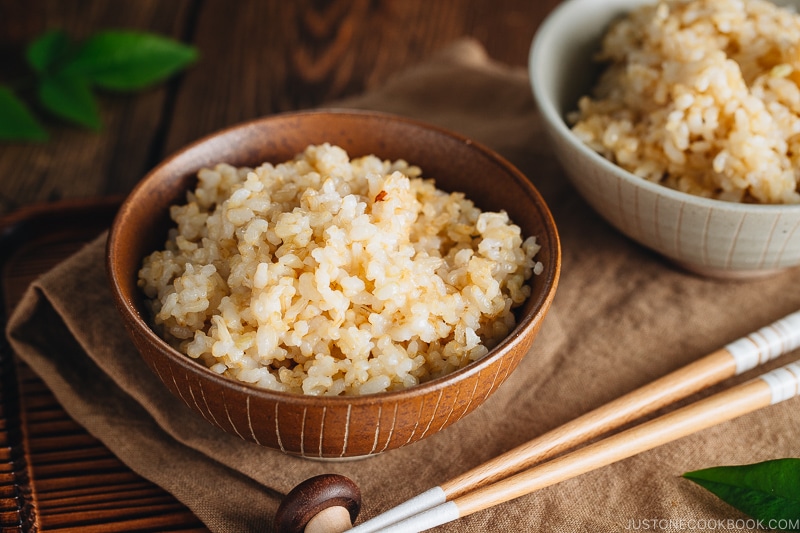
One of the core staples of Japanese cuisine is rice. While white rice would be more suitable for those with digestive issues and sensitive stomachs, genmai (玄米) is a better choice due to its rich fiber and nutrient content.
Genmai is said to have approximately five times more fiber than white rice. This helps you feel full faster and promotes metabolic health, reducing bowel problems such as constipation. Genmai also contains a host of nutrients and vitamins, such as vitamin E, B group vitamins, iron, magnesium, potassium, manganese, and zinc.
As genmai has a low glycemic index, meaning that sugar is absorbed into the blood more slowly, it is a better option for those who need to watch their blood glucose levels. It is digested into the body slowly, making you feel full faster.
👉🏼 Check out our guide on How to Cook Genmai here.
Miso
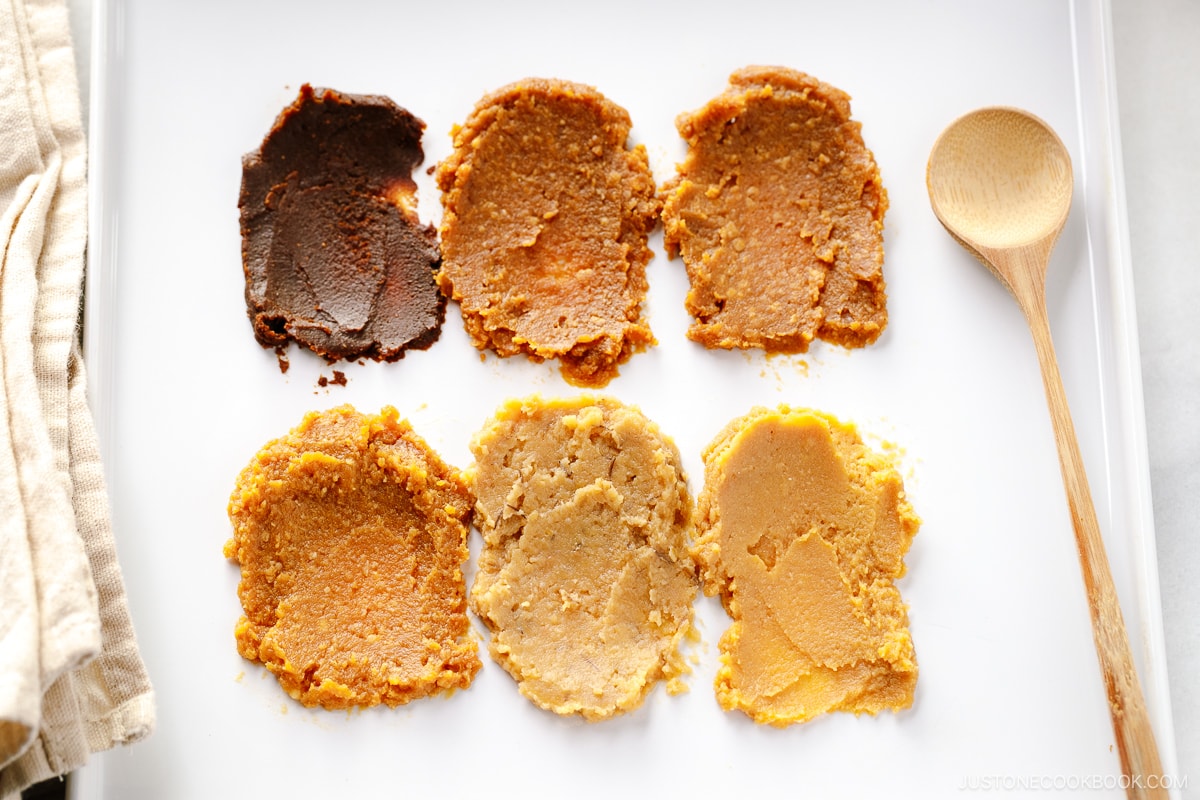
Miso will likely come to mind when we mention the superfood of Japanese cuisine. This fermented soybean contains three essential nutrients: protein, carbohydrates, and lipids. Fermentation generates large amounts of the nine essential amino acids and vitamins necessary to maintain a healthy body.
With numerous brands of miso available, selecting a high-quality product is essential. Nami’s preferred brand is Hikari Miso, readily available at Asian grocery stores or on Amazon.
What is the easiest and most beneficial way to incorporate miso? Make homemade miso soup and enjoy it daily! This Japanese version of chicken soup provides immense health benefits and is easy to make.
👉🏼 As for other ways to use miso, the possibilities are virtually endless! Check out our best miso recipes!
Shio Koji
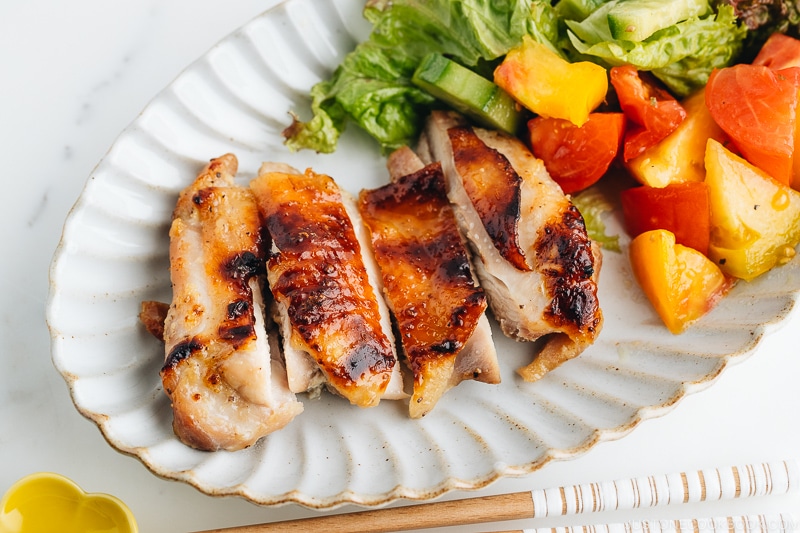
Koji, made by cultivating microorganisms known as Aspergillus oryzae into steamed grains and beans, has been an integral part of Japanese cuisine for centuries. Various koji products exist, including rice koji, barley koji, and bean koji, with one of the most commonly used being shio koji.
In recent years, shio koji has gained popularity as a seasoning known for enhancing the flavor of dishes and offering numerous health benefits. Besides its ability to boost umami, shio koji is rich in vitamins and amino acids, which are beneficial for skin health and digestion.
So, set aside the salt and start using shio koji in your cooking! The application is as easy as using salt.
👉🏼 Try our Shio Koji Chicken or this simple Daikon and Cucumber Salad with Shio Koji, or this Simmered Kabocha with Shio Koji.
Tofu
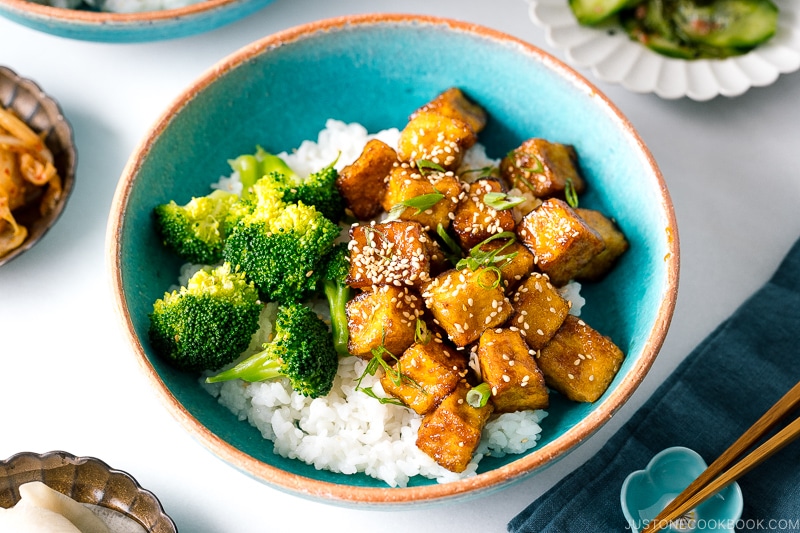
In Western countries, tofu (豆腐) is often considered a substitution for meats and protein. However, it’s commonly used in Japan as a side dish, such as Agedashi Tofu, or alongside protein, such as Mapo Tofu.
It has a long list of health benefits, most notably being a low-calorie food and having a protein known as linoleic acid, which helps lower cholesterol and blood pressure and is effective against arteriosclerosis.
We have plenty of great recipes and articles on tofu here for you:
Natto (Fermented Soybeans)
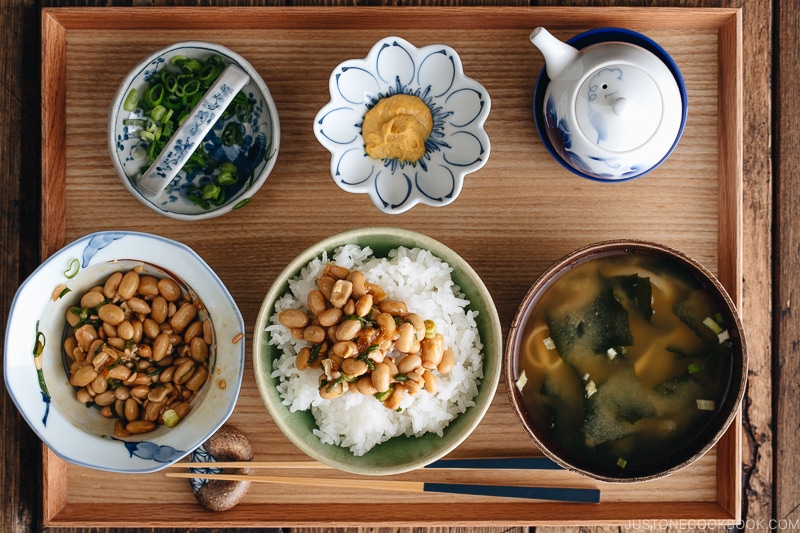
Weird? Gross? Stinky? You’ve probably heard of the not-so-loving descriptions of natto, but this traditional Japanese food should not be belittled or made fun of.
Despite its texture and intense aroma, the health benefits of natto (納豆) are undeniable. First, it’s a great source of protein, with just one pack (approx. 50g) containing 8g of protein. It also has around 3-5g of water-soluble and insoluble dietary fibers, which are fantastic for gut health.
Natto is also rich in vitamins and minerals, such as vitamin K, which is crucial for bone health; vitamin B6, essential for maintaining skin health; and vitamin E, which prevents lipid oxidation and reduces bad cholesterol.
👉🏼 These are compelling reasons to give natto a try! Discover more about how you can enjoy natto.
Soba Noodles
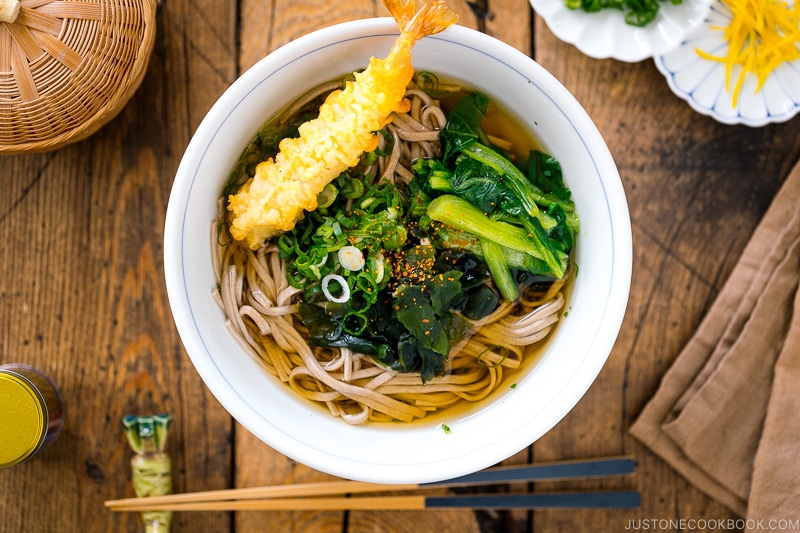
The Japanese love their noodles, and while we love our ramen and udon, soba (そば) is the go-to healthy choice. The high-quality soba is made from buckwheat flour and is known for having rutin–a plant pigment that promotes blood circulation and helps control high blood pressure.
It also contains two to three times more vitamins B1 and B2 than rice or wheat, which are effective in recovering from fatigue. If you prefer gluten-free, look for 100% buckwheat soba.
👉🏼 Simply enjoy Soba Noodle Soup with a hot dashi broth or chilled as Zaru Soba in the summer.
Umeboshi
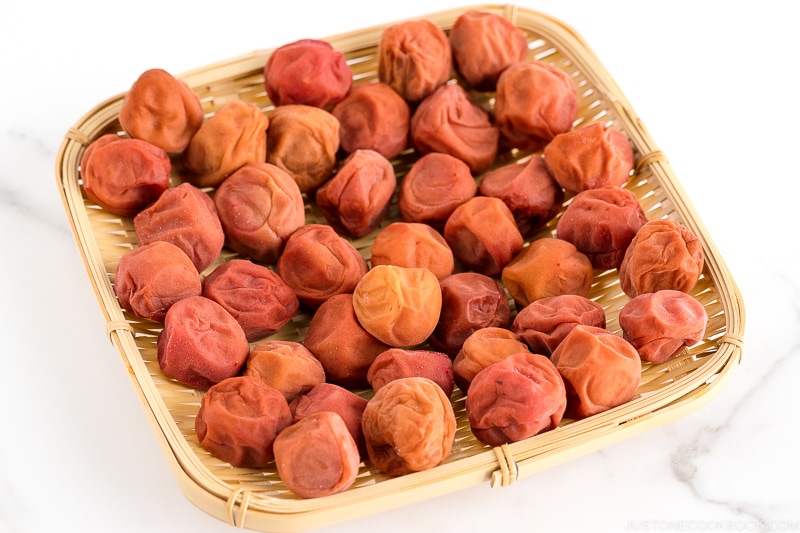
These extremely sour Japanese pickled plums are revered as a superfood in Japan. Owing to their extended shelf life and substantial nutritional value, samurai warriors carried umeboshi into battle as sustenance during the Sengoku period (1467-1615).
One of umeboshi’s most notable health benefits is its efficacy in combating physical fatigue. The high concentration of citric acid and malic acid aids in breaking down lactic acid in the muscles, facilitating recovery from fatigue.
Citric acid also enhances the absorption rate of calcium, making umeboshi particularly beneficial for children. In the summertime, Japanese mothers often make umeboshi onigiri or add a piece of the plum to their children’s bento boxes!
👉🏼 Flavor your noodles or salad dishes with umeboshi for an unexpected bright tang! Learn more here.
Edamame
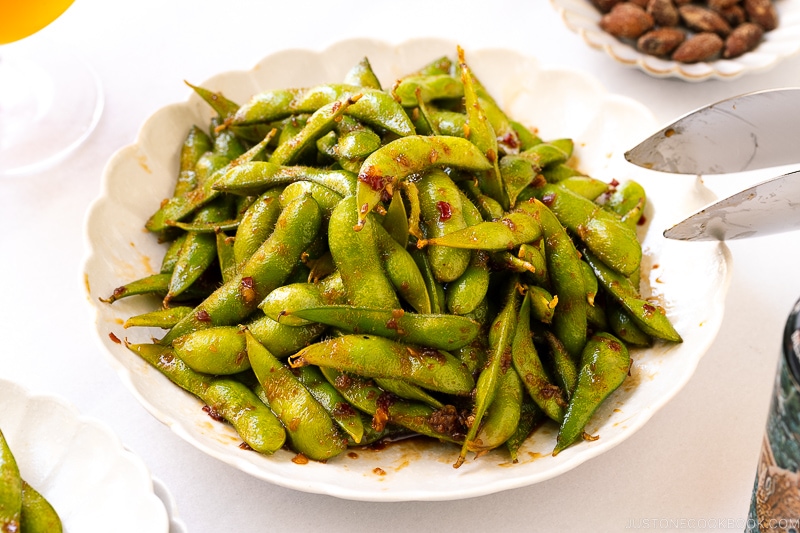
Perfect as a snack for adults and children or as baby food for newborns when mashed, edamame is one of few plant-based foods with complete protein!
High in vitamin C and a polyphenol known as isoflavones, it’s also great for your skin, which helps maintain your skin and improve wrinkling and sagging. It’s also high in methionine, an amino acid that controls liver function and helps decompose alcohol.
👉🏼 Recipes: How to Properly Cook Edamame and Spicy Edamame
Daikon Radish
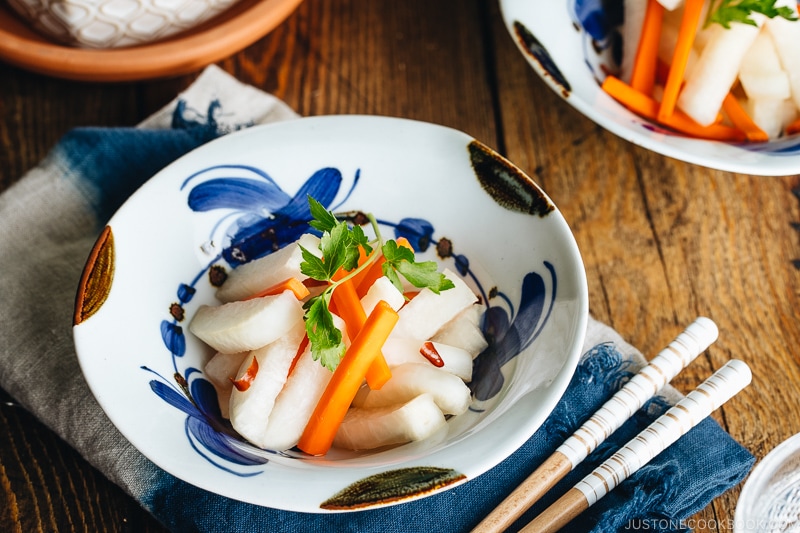
Daikon is a low-calorie, versatile root vegetable often used in hot pots, salads, or pickles. While it can be found throughout the year, it comes into the season during the winter.
Packed with vitamin C, it helps produce collagen and strengthen the immune system, perfect for fighting the winter cold. We often serve grated daikon next to deep-fried food if you have ever noticed. That’s because it is known for its detox properties. It helps to cut the grease of oily food and aids in digestion.
What’s more? High in folic acid, it is a great food for pregnant women and those with anemia.
👉🏼 Learn: 16 Delicious Daikon Recipes (Plus More Ways to Use It)
Konnyaku (Konjac)
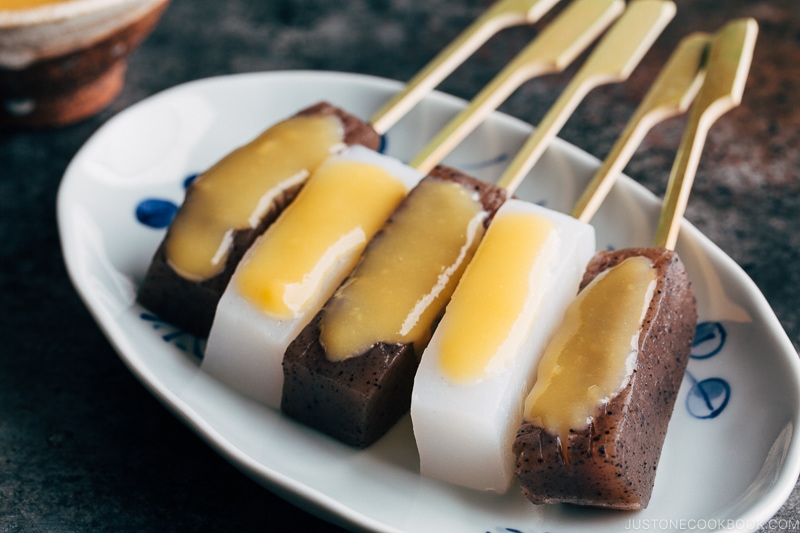
This greyish, gelatinous food is known as konnyaku (こんにゃく) or konjac. It primarily consists of water (97%), pulverized konnyaku powder, and seaweed powder, resulting in a jelly-like consistency.
In Japan, konnyaku is favored as a dietary staple due to its high water content and rich dietary fiber. With only around 5 kcal per 100g and zero grams of sugar, it is widely appreciated as a low-calorie option. Moreover, konnyaku is believed to aid in preventing colds, infections, and allergies.
Are you on a keto diet? Konnyaku is an ideal ingredient to incorporate into your cooking! You can easily add it to hot pots and stir-fries to add volume to meals without increasing calorie intake.
Try it in a nutritious soup like Kenchinjiru (Root Vegetable Miso Soup) and simmered dishes, or even boiled and topped with miso such as Miso Dengaku.
Nagaimo (Mountain Yam)
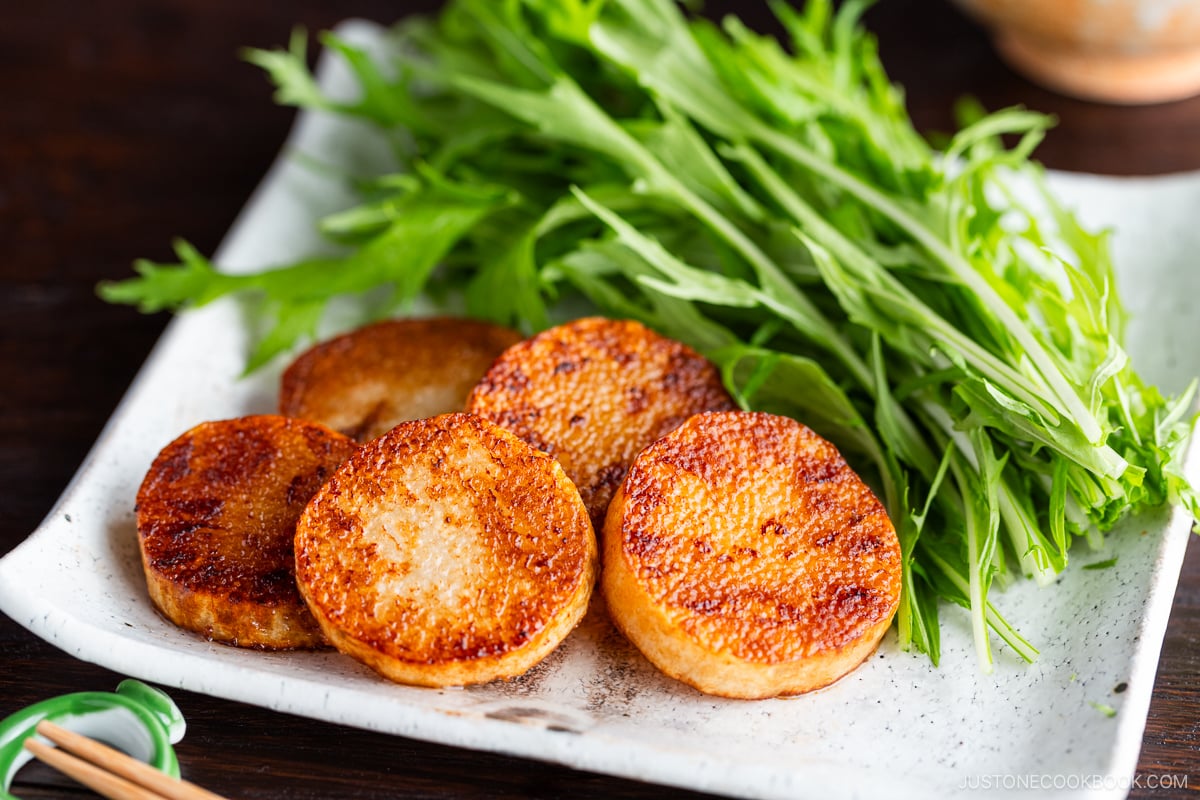
Another peculiar yet super healthy ingredient is nagaimo. This long and slender mountain yam is used in various Japanese dishes, such as salads, Sauteed Yam, and as a binder in Okonomiyaki.
The texture is crisp, crunchy, and less starchy than other tubers, such as yams and taro. It contains an enzyme known as diastase, which breaks down starch and aids digestion, making it easier to absorb the nutrients you ingest.
Nagamio is also rich in vitamin B1, essential for carbohydrate metabolism and various nutrients that help recover from fatigue, replenish stamina, tonicize nutrition, and prevent summer fatigue.
Okra
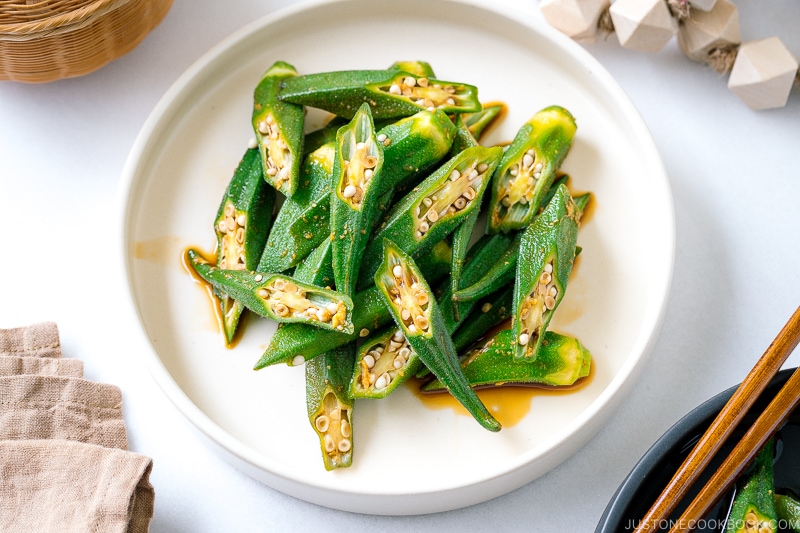
Okra, sometimes called ladies’ fingers, is a popular summer vegetable in Japan. Cooking with this vegetable may seem daunting if you’ve never used it before, but fear not! Try simple and delicious recipes such as Okra Ohitashi (Okra Salad) or Okra with Ginger Soy Sauce!
The unique shape and stickiness of okra offer numerous health benefits. It’s packed with β-carotene, which supports immunity and eyesight, maintains the health of mucous membranes (such as the nose and throat), keeps skin and hair healthy, and has anti-aging properties. So, ladies, eat your okra or ladies’ fingers:)
Okra is an excellent food choice for those with anemia. It is rich in folic acid, which aids red blood cell production.
Goya (Bitter Gourd or Bitter Melon)
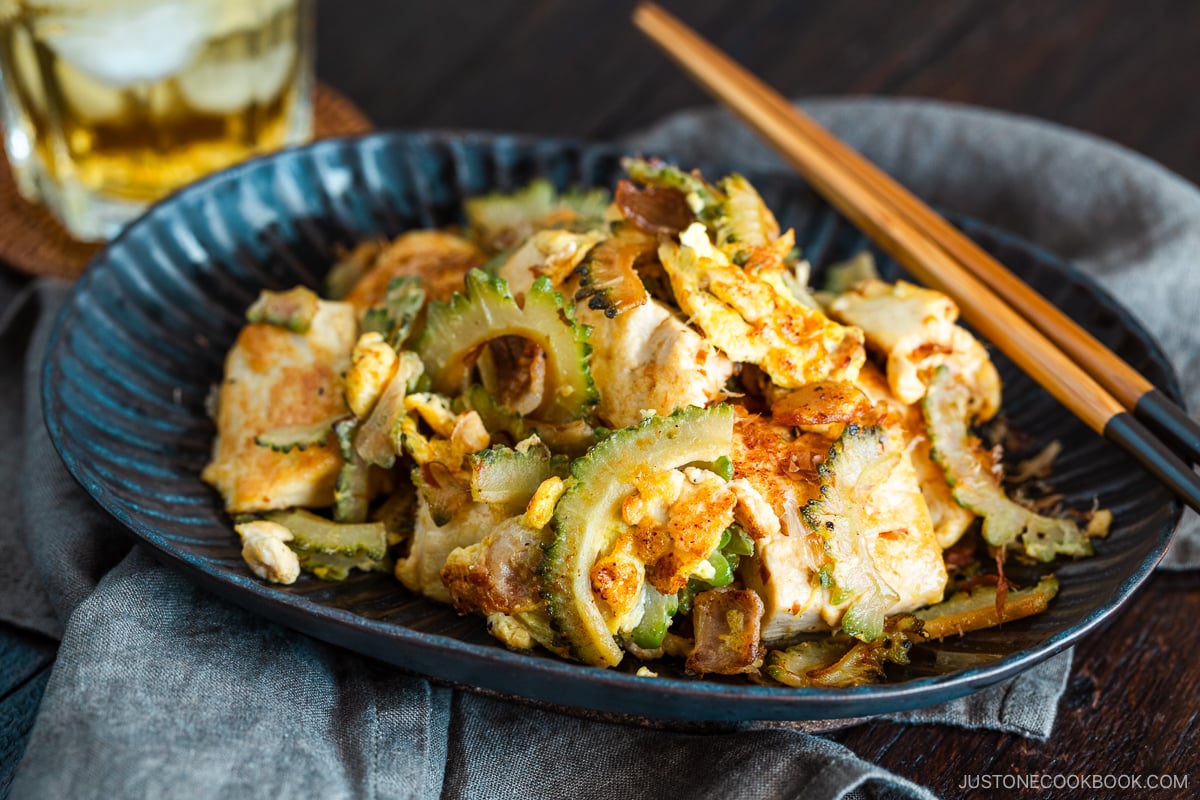
A staple in Okinawan cuisine, goya is a love-it-or-hate-it vegetable. Goya Champuru is my favorite dish! Goya’s bitter taste can be too intense for some, but this traditional Japanese vegetable has many nutritional benefits.
In Japanese and other Asian cultures, we believe that bitter food is good for you. And that’s backed by science. The bitter components in goya, which include momordecin, have been proven to aid in lowering blood sugar levels and stomach health.
Most notably, goya is known to have lots of vitamin C, which helps build collagen in the body. High in folic acid, it is the food for many Japanese women in their early stages of pregnancy.
Okinawa Purple Sweet Potatoes
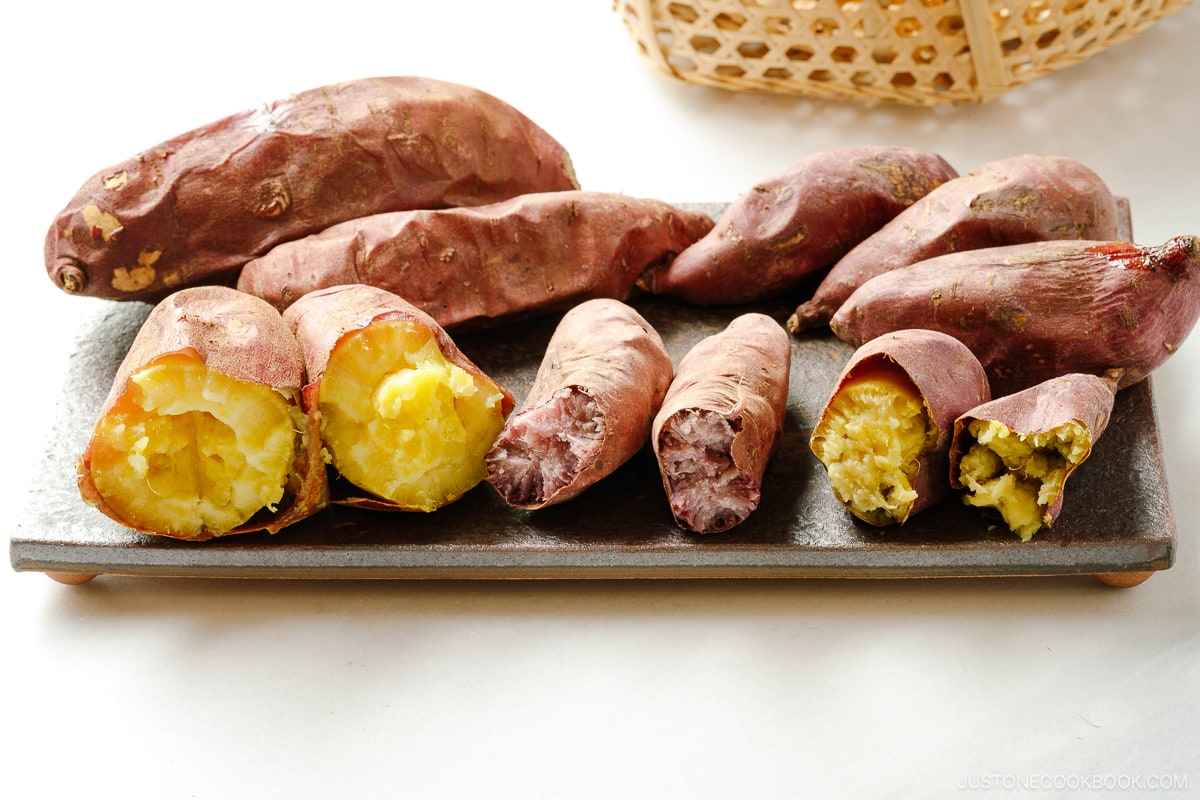
A visually distinct purple color, these sweet potatoes are grown in Okinawa and, in more recent years, have become known as a global superfood. Its intense sweetness allows for various uses, from savory to sweet dishes.
The high vitamin A content helps cure eye strain and maintain vision. In addition, it’s rich in minerals such as potassium, calcium, and magnesium and vitamins such as vitamin E, folic acid (vitamin B9), and vitamin C. These all help with antioxidant effects, regulating blood pressure, preventing summer fatigue, relieving stress, and regulating hormone balance.
Renkon (Lotus Root)
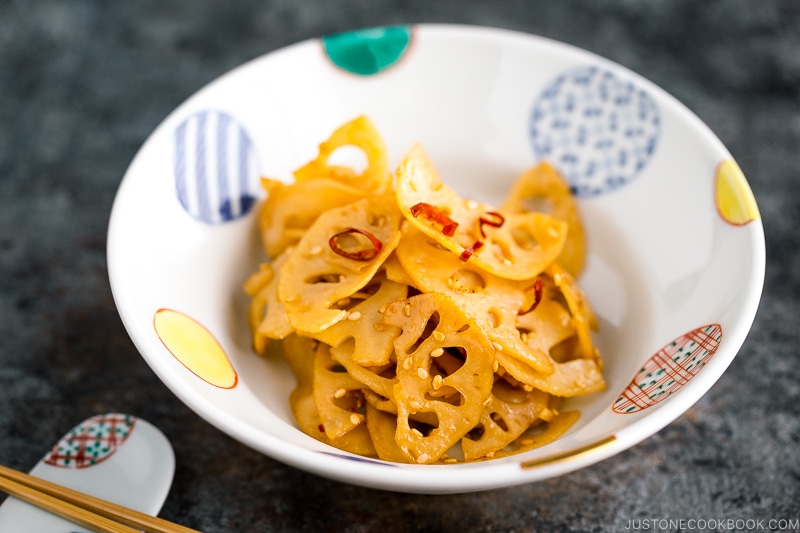
Lotus Root, or renkon, is the edible rhizome of the lotus plant that is crunchy with an earthy, nutty, and sweet flavor. It’s great for stir-fries, deep-fried into Renkon Chips, or our Chirashi Sushi recipe.
Renkon is packed with vitamin C, which helps boost the immune system; dietary fiber, which helps with gut health; and potassium, which is said to be effective in controlling excessive salt intake and preventing high blood pressure.
If you have ever used renkon, you will notice that it decolors if peeled and left out. This is because of tannin, which is effective for gastrointestinal problems!
Bamboo Shoot
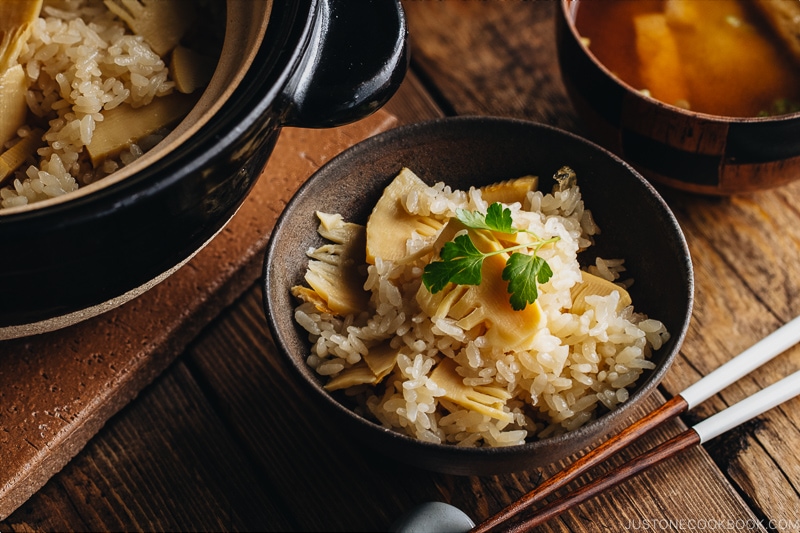
We love bamboo shoots as a topping on our ramen, but you can also use this versatile vegetable in a stir-fry like this popular Beef and Green Pepper Stir-Fry or a fragrant mixed rice dish.
The primary nutrient in bamboo shoots is dietary fiber, which gives them their unique chewy texture. This fiber also helps expand the digestive system, making you feel full faster.
It is also rich in vitamin B1, which helps recover from fatigue, and B2, which helps promote metabolism, burning fat, and regenerating cells.
Mizuna
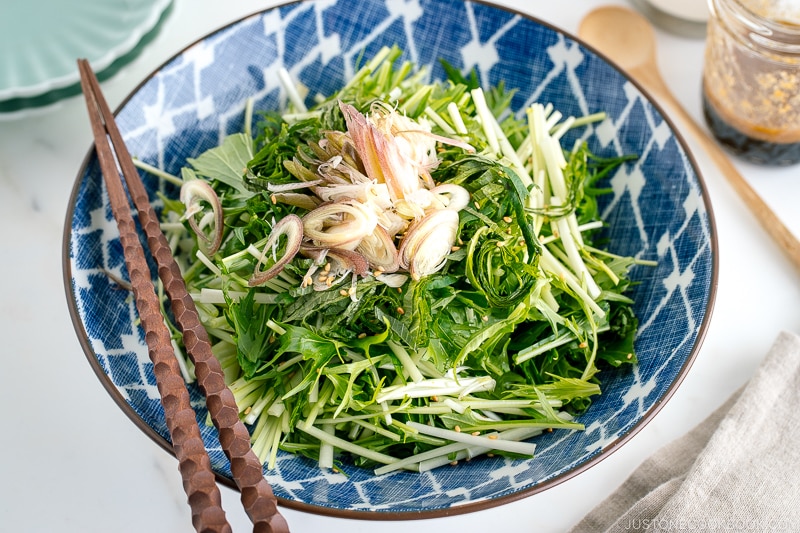
Mizuna is a Japanese green with a mild, peppery flavor. It is more than 90% water, so it is low in calories and contains numerous nutrients and vitamins. Combining vitamin C and β-carotene promotes collagen production, antioxidant effects, and strengthening immunity.
If you cut off dairy but seek to increase your iron intake and calcium, try eating more mizuna. You can even grow them easily in your garden.
Gobo (Burdock Root)
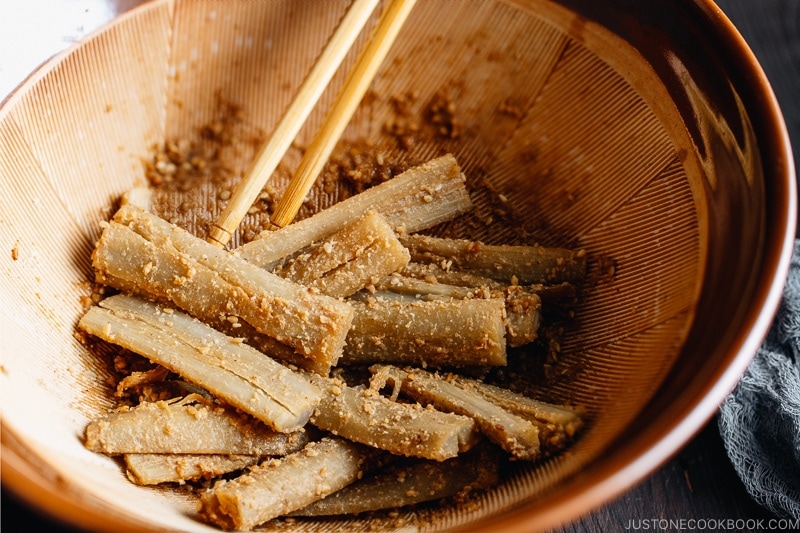
Gobo, or burdock root, is a root vegetable known for its earthy taste and used in classic Japanese dishes such as Kinpira Gobo.
It is known for being an excellent source of dietary fibers that help with gut health and relieve constipation. It’s also rich in antioxidants called polyphenols, which help prevent body aging. Burdock root also has a diuretic effect that removes excess salt from the body, which helps relieve swelling.
Myoga (Japanese Ginger)
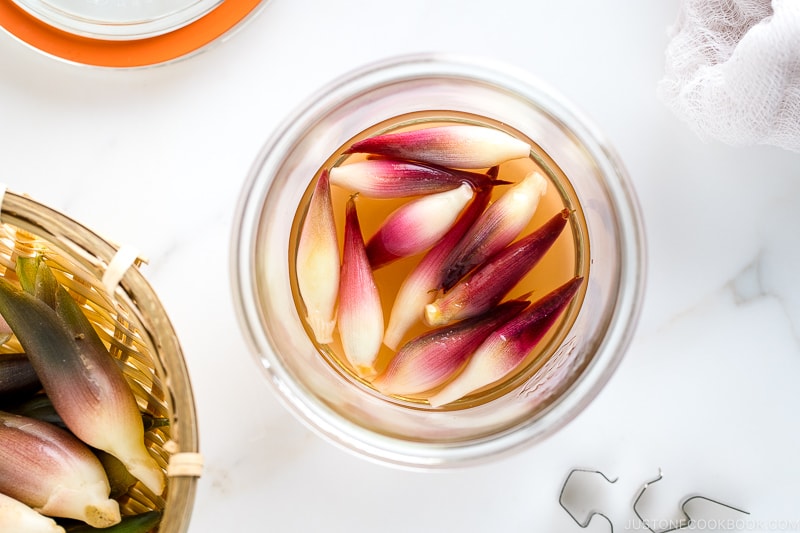
Myoga is a Japanese ginger known for garnishing various summer dishes such as salads, chilled tofu, and udon noodles.
While it is mainly used as a garnish, do not underestimate the deliberate use of this ingredient. A wise Japanese homemaker knows that myoga, containing potassium, helps with high blood pressure.
Satoimo (Japanese Taro)
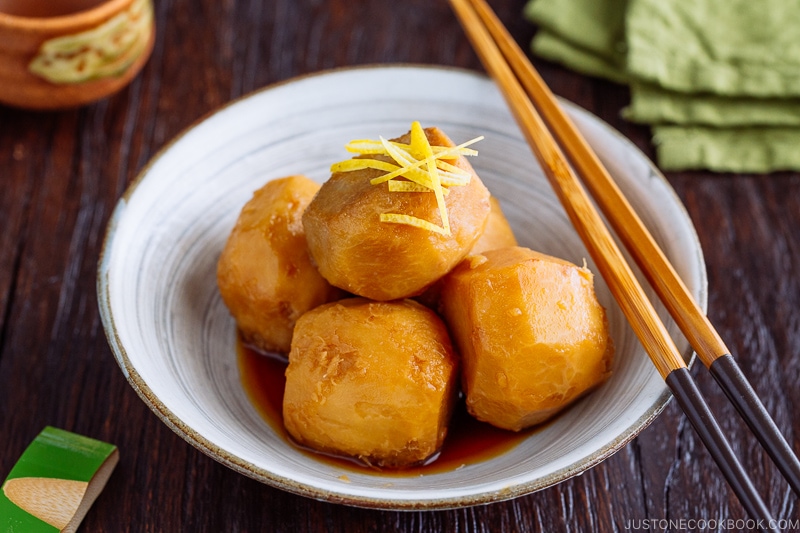
Satoimo, or Japanese Taro, is a starchy root crop similar to potatoes but with fewer calories and higher fiber content. It’s mainly used in simmered dishes such as Chikuzenni (Simmered Chicken and Vegetables) and Ozoni (Japanese New Year Mochi Soup).
The two main dietary fibers in satoimo are galactan and glucomannan. The former helps slow down the absorption of carbohydrates, thereby suppressing the rise in blood sugar levels and intestinal flow. Glucomannan, also in konnyaku, helps lower blood cholesterol and prevent increased blood sugar levels.
Satoimo also has high potassium levels, effectively preventing high blood pressure and swelling.
Moui
Moui is possibly the most unique vegetable on this list. It is also known as Chinese cucumber, red gourd, or yellow cucumber and is grown in Okinawa between July and October.
Its taste is like a cucumber, with a slight hint of melon in taste and texture. Although it is made of 90% water, it contains a high amount of potassium that helps with high blood pressure and summer fatigue, making it great in salads and pickles.
Green Tea

Green Tea is a staple in Japanese food and drinks. Much like tea in the UK, many people have green tea throughout the day, with or after their meals.
Green tea has a host of health benefits, one of which is its catechins content. These are chemical compounds with antibacterial properties that help prevent colds and boost immunity. Catechins are also said to help increase fat metabolism and suppress the absorption of carbohydrates.
👉🏼 Discover: Green Tea: History, Types, & Benefits
Learn: How to Make Japanese Green Tea
Amazake (Fermented Japanese Rice Drink)
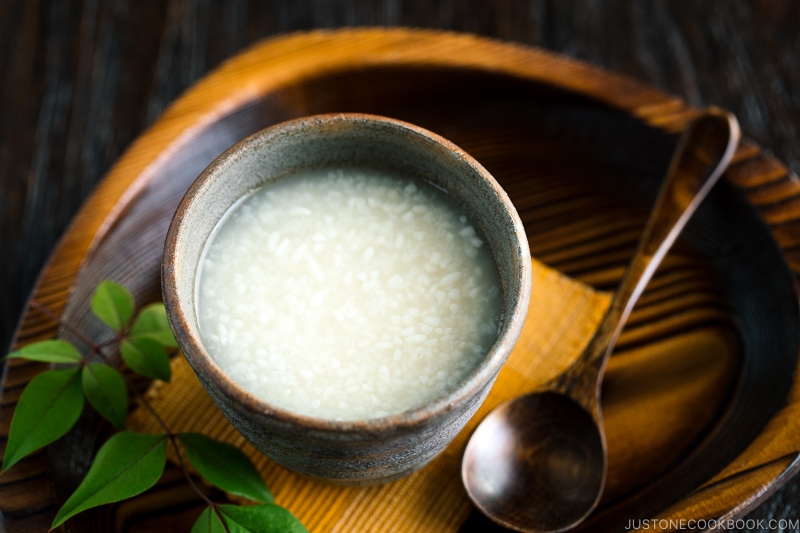
There are two types of amazake (甘酒): one made from sake lees (alcohol) and one made from rice koji (non-alcohol).
The glucose content in amazake aids in digestion and increases blood sugar levels. When blood sugar levels rise, the satiety center in the brain is stimulated, so drinking a small amount of amazake can fill you up, making an excellent alternative to snacking.
It is also rich in B vitamins that support protein metabolism, leading to healthy skin. Because it is made with rice koji, you can get all the above benefits!
You can make amazake at home with our recipe here!
The list of healthy foods and produce goes on, but these are just some common and some not-so-common ones you can find in Japanese cuisine!
Explore: Healthy Japanese Recipes
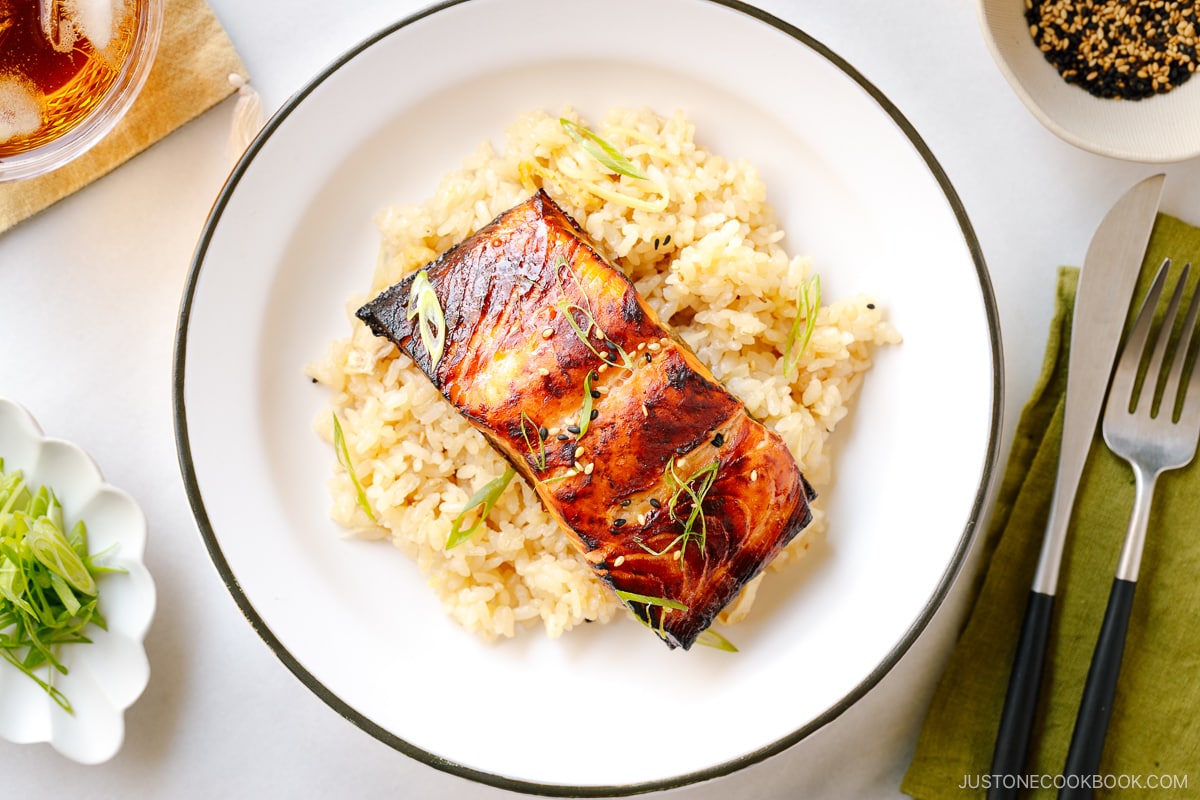
Don’t forget to check out our Best Healthiest Japanese Recipes!
Wish to learn more about Japanese cooking? Sign up for our free newsletter to receive cooking tips & recipe updates! And stay in touch with me on Facebook, Pinterest, YouTube, and Instagram.
Discover more from reviewer4you.com
Subscribe to get the latest posts to your email.



